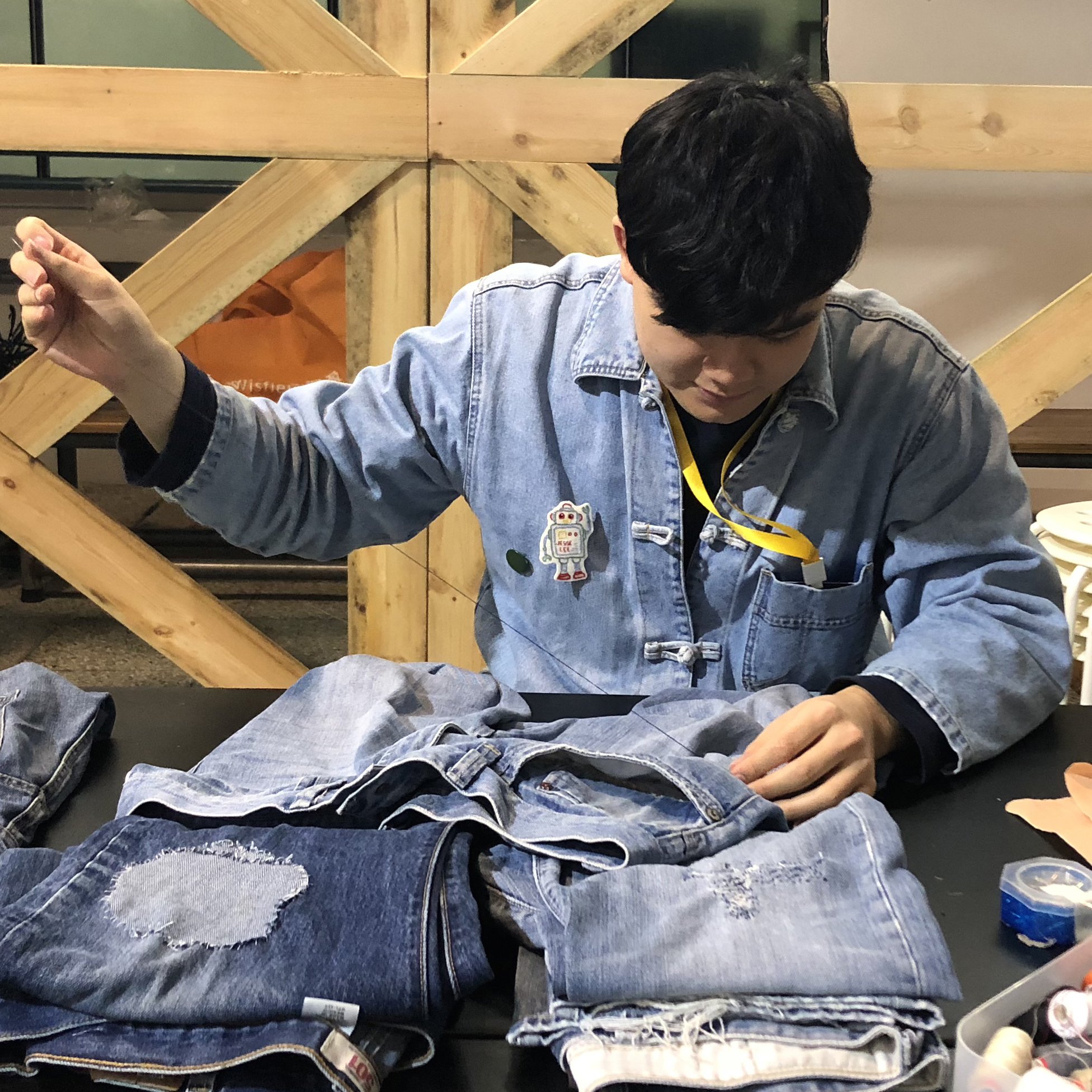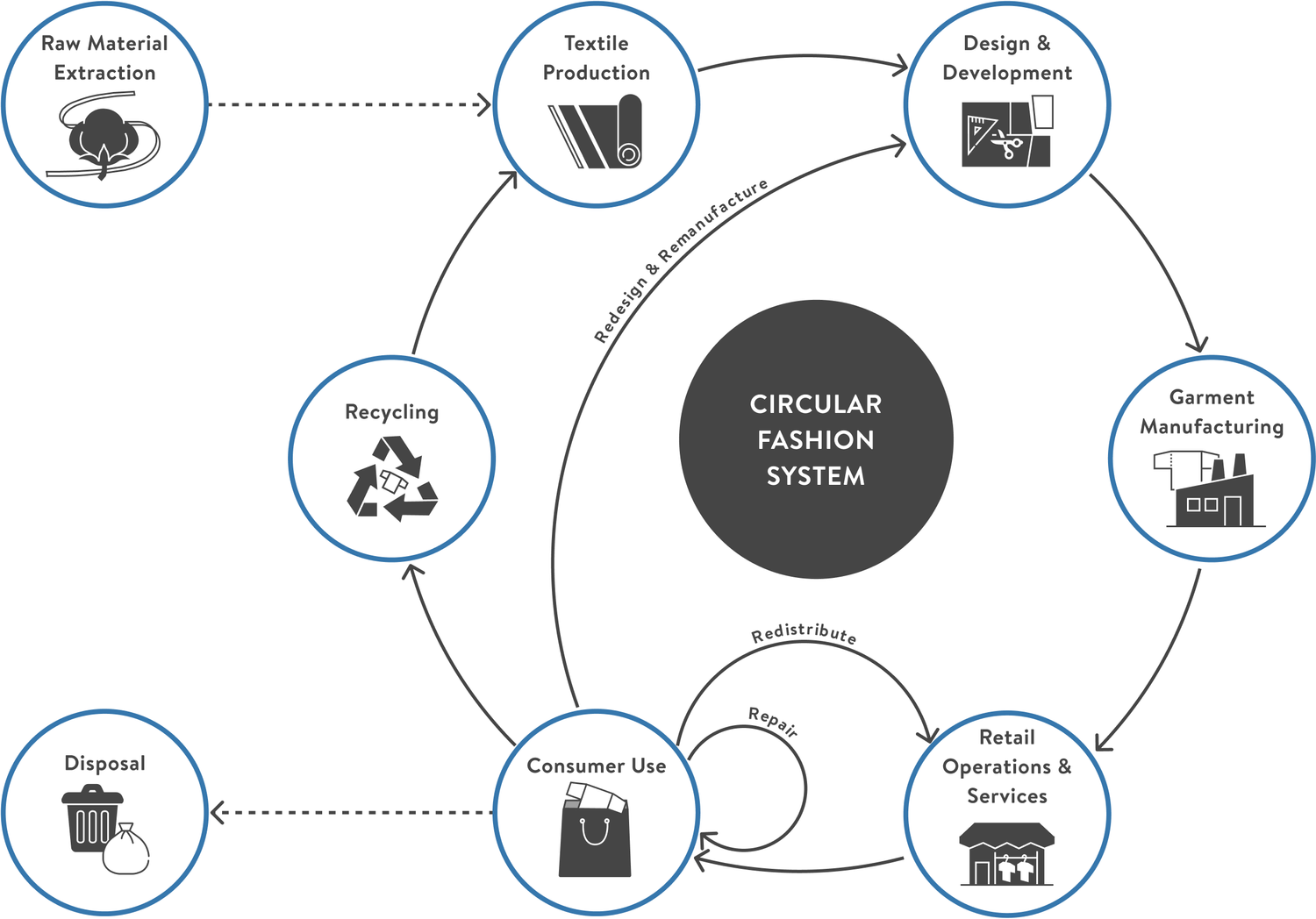Design for Longevity
Design for Longevity
Created by Redress

What Is it?






Every fashion item has its lifespan, and both designers and wearers play critical roles in determining their longevity, which is the timespan over which the item remains relevant and useful.
The common linear model of production and consumption for fashion and textiles can be extremely wasteful and often results in numerous negative environmental impacts. To design garments that withstand the test of time, it is critical for you to consider the circular system of production and usage, which often presents unique design challenges. Whilst you cannot control how long the owner keeps a garment, you can work backwards to understand the reasons why people discard garments and mitigate them.
Designing for longevity is a strategy to extend the use phase of products by:
- Creating long-lasting clothing - good-quality materials and durable workmanship, ensuring good fit, and communicating clearly about the care instructions.
- Creating value - facilitating an emotional bond between the wearer and garment, and exploring business models that extend the active life of clothes.
Why dO it?
The ultimate goal of creating a garment is for it to be worn. Understanding and responding to the needs and desires of the wearer is critical to the design process in order to extend the active life of a garment significantly and thus reduce environmental impacts beyond the purchase point.
It is estimated that doubling the lifetime of a garment can reduce its environmental impact by 49%. Keeping clothing in use for longer avoids both the carbon emissions and water that would be used to produce new ones.[1]
How tO do it?
Make long-lasting clothes
Making long-lasting clothing refers to the physical longevity of a garment:
- Is it durable? Considerations include fibre choice, fabric quality (colour fastness, resistance to abrasion, odours, and stains), construction, and workmanship.
- Is the size and fit adapted to the target wearer?
- Is the garment easy to care for and is that communicated to the wearer?
1 Durability & quality
First let’s consider how a garment will hold up to its intended function through physical durability and quality.
Material choice is one of the key aspects within this scope. All fibres have individual properties — for example, natural fibres are traditionally preferred for their comfort. Synthetic fibres, on the other hand, are physically durable and easy to care for due to their wrinkle resistant properties.
Garment construction also plays a role in physical durability. For example, selecting the correct stitch can keep seams lasting longer. Another consideration is the dyeing method of textiles. Garments with colour fading may be considered damaged and therefore be discarded earlier, or conversely, this could add to the character of the item. Treatments and special finishes can improve the feel, performance, and appearance of the fabric, which can extend the active use of a garment. To ensure these elements are correctly applied, it is recommended that garments are tested to assess their physical qualities.

Image credit: Victornee
Childrenswear brand Victornee was designed with consideration for how young children may often fall while running and playing, with torn trousers at the knee being a common issue. To ensure durability, all trouser styles from Victornee feature multi-layer reinforced knees achieved by quilting layers of durable fabrics together.
Expert Tip
Jeffrey Man and Davy Chan
Co-Creators of Cosmos Studio
The durability of a piece of clothing is undermined when the raw material is treated with toxic chemicals such as dyes, bleach, and detergents. It is advised to look for materials that haven’t been treated with harmful chemicals. A few certifications are reassuring on this front:
- OEKO-TEX® – which ensures effectiveness in protecting wearers from potentially harmful substances
- REACH by the European Chemical Agency (ECA) – which ensures the chemicals used in the production are of manageable potential concern, degradable, and will not emit hazardous gases upon degrading
- Zero Discharge of Hazardous Chemicals (ZDHC) – which supports safe chemical management practices across the entire value chain.
2 Size & fit
Size and fit directly affect a garment’s physical longevity. Finding the correct fit can be difficult for customers, and sizing issues commonly lead to the early disposal of garments. Consider incorporating features which allow the wearer to adjust the size of the garment, such as built-in fastenings or allowing room for alterations.
Another approach can be to offer made-to-measure or alteration services to wearers for a personalised and accurate fit.

Image credit: Bundgaard Nielsen
Danish designer Mette Julie Bundgaard Nielsen developed a flexible sizing system through her Circle project, allowing for alterations to increase the use of a garment throughout the wearer’s life. This dress is printed with visible grading lines that wearers can follow when altering the garment. To allow for further adjustments, the seams are covered with removable bias tape and the dress has extra seam allowances.

Image credit: Unspun
Hong Kong denim brand Unspun is following a tailored approach. Customers can use an iPhone to scan their body and create a digital avatar on the Unspun app. From there, the technology can instantly tailor perfectly fitting clothes to each customer. To learn more, please visit the Redress Academy.
3 Consumer use
Producing a high quality garment made of durable materials in the correct size is a good starting point for you to ensure the wearer continues to wear the garment through the years. But without knowledge about how to maintain and care for the item, the garment could still be discarded early. You can help wearers extend the life of their garments by attaching clear care labels with fibre and washing instructions, and even repair advice or services for common issues.

Image credit: The Slow Label
Austrian fashion brand The Slow Label attaches clear care labels with detailed instructions for different types of clothes. They also offer some tips for consumers to take care of their garments on their official site.

Image credit: The Local Wisdom Project
The Local Wisdom Project depicts the variety of ways in which people use clothes, including how garments evolve past the design stage once they reach their owner. Through adapting for changing needs, Local Wisdom shows the wearer’s power to control the lifespan of a garment.
Expert Tip
Alison Gwilt
Associate Professor in Design at the University of New South Wales Sydney
When you design for longevity, it’s important to understand how people use the clothes that you create. While you can interview people about their clothing care and maintenance practices, I would also advocate observing people in action. If you watch someone interacting with their garment, for example, during laundering you will see how and where practices need to be improved to help extend the garment’s life. This observation provides useful data to you as a designer and is also an educational experience for the consumer.
Make clothes last longer
Designing clothing for physical longevity is important, but it does not automatically mean that clothes will remain in the fashion loop for longer.
The psychological longevity of a garment is key to making clothes last longer:
- How does the wearer relate to the garment? Consider how you can enable the wearer to create an emotional bond with their garment.
- Did you adapt your business practices in order to extend the active life of your creations?
1 Style
Style can greatly influence a wearer’s attachment to a garment, and thus how long it is kept. While some items may seem fresh for a time, they may end up looking dated as trends fade. To prevent this, you can incorporate a timeless style into your designs. This also enables them to appeal to a wider audience and withstand the rapid pace of constantly changing trends.
Another shift that can be seen in society is a growing openness to gender fluidity, reflected in today’s increasingly androgynous garment styles. People are progressively rejecting traditional representations of gender and cultivating their own styles based on personality and what suits their body type.
2 Storytelling
Outside of function, people do not usually connect with material objects in the same way as they connect with the story behind the objects. Consider a handmade jacket discovered in the back of a family member’s wardrobe, for example — this item would possess value outside of its material make-up. It is the story that stops the wearer from throwing it away. You can use this concept of emotional connection to share the story of your work with your customers.
A good way to start is to gather feedback from customers in order to better understand their values, needs, and aspirations. By understanding them on a deeper level, you can create concepts which resonate with them directly. Another way is to work with materials which have an interesting story that can be incorporated into the new creation.
3 Consumer loyalty and engagement
The most successful designers and companies do not just create products, they create brands with strong identities and values which align with their audience. In order to build brand loyalty, you should understand what is important in people’s current lives, including current social, environmental, and technological issues. This awareness will enable you to empathise with wearers’ future needs.

Image credit: Vivienne Westwood
British fashion brand Vivienne Westwood is known as the first political and climate change luxury brand. It has been associated with sustainability and climate change for more than ten years now, even before sustainability became a global topic. They promote the idea “Buy less, choose well, make it last”, and often use their collections and catwalk shows as a platform to campaign for a better world.
4 Personalisation
Garment personalisation enables people to use their fashion choices to express their own style, self-image, and values. A significant 69% of consumers have said they expect customised or personalised goods.[2] You can tap into this demand by using technology in order to understand wearer expectations, whilst creating customised, unique experiences and products. Collaboration and co-creation between brands and wearers has the potential to increase the value and longevity of the garment, as well as consumer loyalty. Personalisation can range from pre-designed items with the option to select unique colours or materials or simply add embellishments.

Image credit: Vans
American brand Vans has been connecting with youth culture to promote creative self-expression and authenticity. The product line “Customs” allows customers to select their own design including materials, style, patterns, and colour, as well as the option to add symbols or text onto their garments.
Footnotes
[1] Fashion for Good. (2020). The State of Circular Innovations in the Indian Fashion and Textile Industry.
[2] Lectra (2020), Strategies for Mass Customization Trends and on Demand Production in a Changing Fashion Manufacturing Industry.






